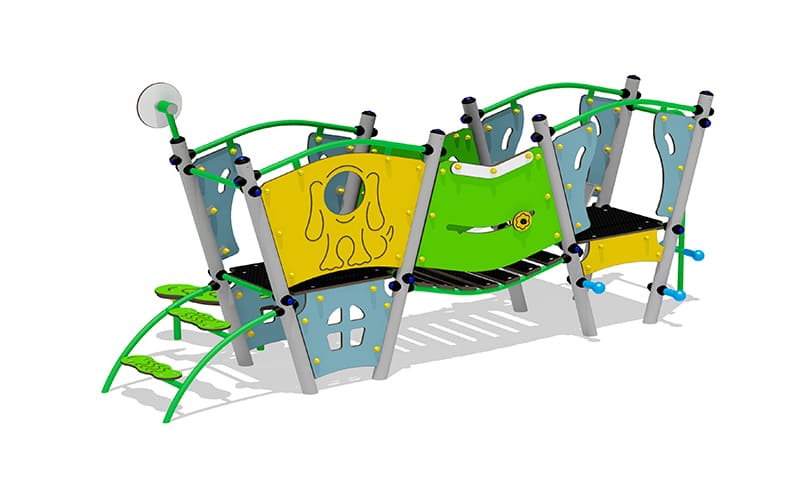Implementing a playground in a public park is an essential decision for any community. However, some common myths can hinder the process and raise doubts about its feasibility and benefits. This article will analyze the main myths about implementing playgrounds in public parks and disprove the erroneous beliefs that may arise.
Playgrounds are costly and not a justified investment
Implementing a playground in a public park is expected to be expensive and not worth the expense. However, this statement is a myth. While it is true that the initial installation of a playground may require a significant investment, the long-term benefits are numerous. Playgrounds provide safe and accessible spaces for children to play and have fun outdoors, positively contributing to their physical, mental, and social development. In addition, playgrounds can attract more visitors to the public park, which can boost the local economy and increase the value of the community.
Playgrounds are dangerous and can cause injuries
It is expected to be concerned about children’s safety when implementing a playground. However, modern playgrounds are designed according to strict safety and quality standards. The playground structures and flooring are made of durable and resistant materials, and safety considerations, such as adequate fall height and absence of sharp edges, are considered. In addition, regular maintenance is recommended to ensure that the equipment is in good condition. With proper precautions, playgrounds can be safe and secure environments.

Playgrounds are only for young children and exclude other age groups.
This is another common myth. Modern playgrounds are designed to cater to different age groups and abilities. In addition to classic swings and slides, playgrounds can include themed play areas, climbing structures, and interactive games, among other elements. This allows children of different ages and abilities to find exciting and challenging activities, thus encouraging inclusion and cooperative play. Adapted play areas can even be included for children with disabilities, promoting the inclusion of all children in the public space.
Playgrounds have no educational benefits
Some might think that playgrounds are play spaces with no educational benefit. This is false. Modern playgrounds have become active learning environments. They can include educational elements such as informational panels, interactive activities, and games that promote children’s cognitive and creative development. In addition, children learn social skills, such as sharing, cooperation, and problem-solving, while interacting with others in the playground. These educational aspects help children develop essential skills for their growth and future.
Playgrounds are underutilized
Many people believe that playgrounds are underutilized or only popular at certain times. However, the reality is that playgrounds are popular and well-visited places in most communities. Children need opportunities to play and explore outdoors, and playgrounds provide just that. In addition, playgrounds attract entire families, which can also benefit other businesses or services near the park. It is always good to conduct research and pre-study to select the right location to maximize park utilization.
Always a good choice for the community
Playgrounds in public spaces offer a variety of benefits to communities. Debunking the myths associated with their implementation is crucial to understanding their importance and value, as they provide safe and accessible spaces for children to play, learn, and develop physically and socially. Implementing playgrounds in public parks becomes necessary as we move towards more inclusive and aware communities.
What did you think of this topic? Do you want to know more about playgrounds in public parks?
If you want a playground for your project, community, daycare, school, or public park, contact us by visiting the following link.
